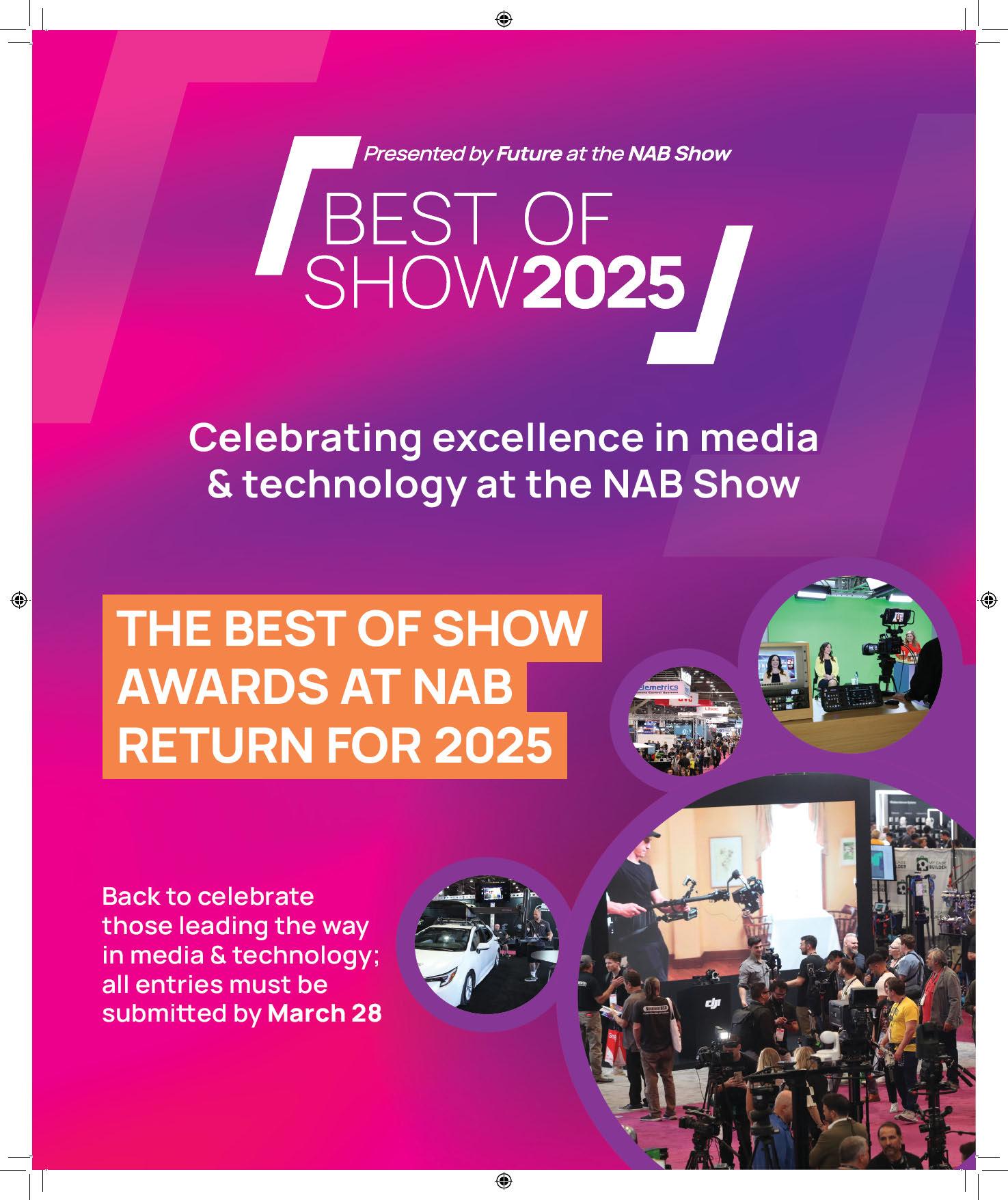Welcome to the March 2025 issue of

















Make quick, precise audio adjustments from anywhere, any time. Complement your news automation system with this virtual mixer.





Adjust the occasional audio level with the Virtual Strata mixer as an extension of your production automation system. Mix feeds and manage the entire audio production with all the mix-minus, automixing, control and routing features you need from your touchscreen monitor or tablet. Fits in any broadcast environment as an AES67/SMPTE 2110 compatible, WheatNet-IP audio networked mixer console surface
Connect with your Wheatstone Sales Engineer Call +1 252-638-7000 or email sales@wheatstone.com




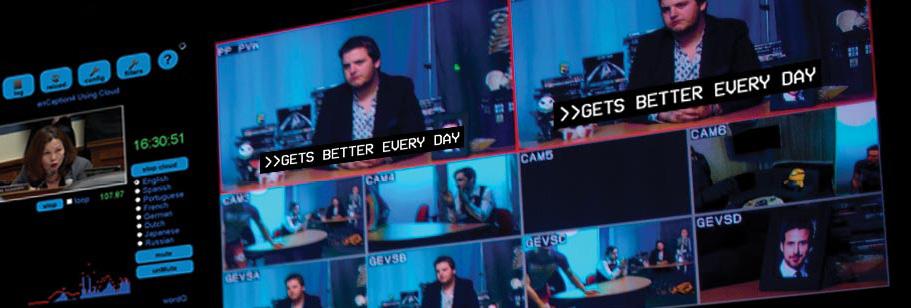






NAB Show To Unveil Unprecedented Array of Primetime-Ready AI Solutions Is the technology finally living up to the hype? By
Fred Dawson
for
Phil Rhodes
Kevin Hilton
Cinematic
Cohen
James Careless


We often remember where we were when momentous events or changes in our lives or the world occur. Do you remember where you were five years ago when the impact of the Covid-19 pandemic finally hit home?

Of course you do. We all do, because we were home—most of us, at least. But as broadcasters who needed to stay connected to our communities, many of us didn’t have that luxury. In the middle of a 100-year health crisis, it was imperative that homebound viewers were more aware of what was happening than ever before.
For me personally, I knew the pandemic had really hit home on March 11, a day acknowledged among many as the official first day. That was the day the World Health Organization officially declared Covid-19 as a “global pandemic” and when President Donald Trump announced a ban on travel to Europe. But it was also the day that the 2020 NAB Show was officially canceled.
Covid-19’s impact on trade shows was immense, with the industry losing $30 billion in 2020 alone. “Virtual” became the norm and Zoom’s stock exploded as everyone sought alternative ways to stay connected.
Two years later, when the trade show industry was slowly recovering, the NAB Show returned to Las Vegas, albeit tentatively with many restrictions still in place. But as concerns over the coronavirus have receded, attendance is back, although the numbers have yet to match prepandemic days and there is some doubt as to whether they ever will.
Covid-19 impacted our industry perhaps more than any single technology. Although much of the technology for remote production and use of the cloud and IP were already in place five years ago, the closure of broadcast facilities and masking of reporters while constantly being reminded to practice safe distancing forced us to adapt and change in ways never before encountered. For example, interviewing someone over a Zoom connection on live TV was not nearly as common before 2020—now no one bats an eye (except “Room Rater,” perhaps).

Journalists wearing masks during an outdoor press conference in Chicago on April 30, 2020.
During the early days of the pandemic, we also learned the definition of an “essential employee,” with many retail employees gaining that status along with health and emergency workers. Broadcasters were pushing for “first responder” status prior to 2020, but the events that transpired during the pandemic proved that whether or not we could be considered “first responders,” our role as “first informers” proved its worthiness.
Finally, we mustn’t forget the toll the pandemic took on the world at large. As of this writing, more than 7 million worldwide have died of the disease since 2020, according to the World Health Organization (which cautions that that number could be much higher due to reporting deficiencies). According to the Poynter Institute, more than 500 journalists and media workers in the U.S. alone had died of the disease by the end of 2020.
We’ve learned a lot about pandemics over the past five years and hopefully incorporated a lot of those lessons into our daily and professional lives. Will we be prepared for the next one?
Tom Butts Content Director
tom.butts@futurenet.com
Vol. 43 No. 3 | March 2025
FOLLOW US www.tvtech.com twitter.com/tvtechnology
CONTENT
Content Director
Tom Butts, tom.butts@futurenet.com
Content Managers
Michael Demenchuk, michael.demenchuk@futurenet.com
Terry Scutt, terry.scutt@futurenet.com
Senior Content Producer George Winslow, george.winslow@futurenet.com
Contributors: Gary Arlen, James Careless, David Cohen Fred Dawson, Kevin Hilton, Craig Johnston, and Mark R. Smith
Production Managers: Heather Tatrow, Nicole Schilling
Art Directors: Cliff Newman, Steven Mumby
ADVERTISING SALES
Managing Vice President of Sales, B2B Tech Adam Goldstein, adam.goldstein@futurenet.com Publisher, TV Tech/TVBEurope Joe Palombo, joseph.palombo@futurenet.com
SUBSCRIBER CUSTOMER SERVICE
To subscribe, change your address, or check on your current account status, go to www.tvtechnology.com and click on About Us, email futureplc@computerfulfillment.com, call 888-266-5828, or write P.O. Box 8692, Lowell, MA 01853.
LICENSING/REPRINTS/PERMISSIONS
TV Technology is available for licensing. Contact the Licensing team to discuss partnership opportunities. Head of Print Licensing Rachel Shaw licensing@futurenet.com
MANAGEMENT
SVP, MD, B2B Amanda Darman-Allen VP, Global Head of Content, B2B Carmel King MD, Content, Broadcast Tech Paul McLane VP, Head of US Sales, B2B Tom Sikes VP, Global Head of Strategy & Ops, B2B Allison Markert VP, Product & Marketing, B2B Andrew Buchholz Head of Production US & UK Mark Constance Head of Design, B2B Nicole Cobban
FUTURE US, INC. 130 West 42nd Street, 7th Floor, New York, NY 10036


At a time when major changes in the media landscape have transformed multiplatform advertising, a larger group of MVPDs have come together to offer some unified guidance on multiscreen TV advertising terminology. The effort is important because commonly accepted definitions of key terms could simplify the buying and selling of ads by providing some clarity to the complexities of TV advertising.
The agreement on terms involved Comcast Advertising, Cox Communications, DirecTV Advertising, Dish Media, Optimum Media, Spectrum Reach and Verizon Fios TV, as well as Ampersand and the Video Advertising Bureau (VAB). The goal is to align the media industry around the various delivery types of TV advertising in all its forms, focusing on the terms “multiscreen TV,” “streaming” and “traditional TV.”
New research from Advertiser Perceptions highlighted the importance of the effort by finding that only 20% of advertisers say terms are consistently used by their partners, and there is little consensus around the advertising vocabulary being used today.
“As TV proliferates across screens, everyone agrees that we need to simplify the buying and selling experience,” said Jason Wiese, executive vice president. strategic insights and measurement at VAB. “While

some areas of complexity are more difficult to resolve than others, one relatively easy fix is to make sure everyone is speaking the same language. By partnering together across companies to define how we’re talking about multiscreen TV, we can clear up inconsistencies and confusion and bring greater clarity to our increasingly complex industry.”
The recommended terminology is based on Advertiser Perceptions research, commonalities across current language in use and coordination with the VAB. The new lexicon focuses on the various delivery types of TV advertising in all its forms. According to the guidance:
• When referring to video content delivered via an internet connection, use the term “streaming.”
• When referring to content delivered via wired cable, telco, satellite or over-theair distribution (versus internet), use the term “traditional TV.” (Note: As MVPDs transition to IP-based infrastructures, some or all of the ads within a viewer’s “traditional TV” experience may be dynamically delivered.)
• When referring to multiple TV/streaming endpoints, use the term “multiscreen TV.”

PBS Reno and Sinclair have launched KNPB-VC, a new virtual ATSC 3.0 channel, broadcasting on virtual channel 5-11. Viewers find the channel in the electron -
ic program guide (EPG) of their NextGen TVs. Bits transmitted over the air via ATSC 3.0 insert the EPG programming data, while the actual programming is streamed to their NextGen TV via the internet when selected.
The virtual channel brings PBS Reno’s programming into the NextGen TV era. It enables PBS Reno to offer viewers a stateof-the-art experience, including enhanced picture quality with Advanced HDR by Technicolor, the public broadcaster said.
The programming on KNPB-VC mirrors that of PBS Reno’s main channel, 5-1, while providing enhanced accessibility for those with NextGen-enabled televisions.
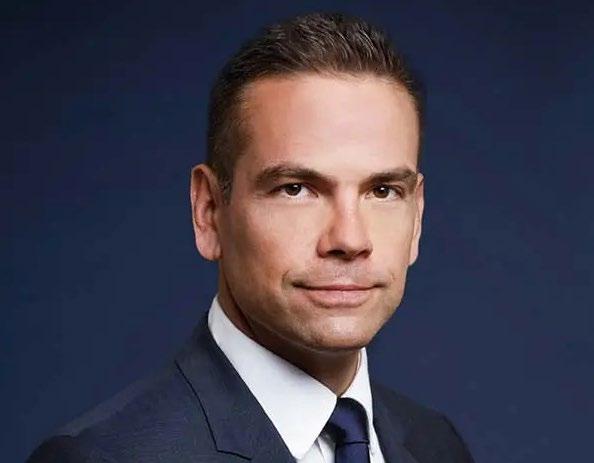
Fox Corp. is planning to launch a direct-to-consumer streaming service sometime later this year, Executive Chair and CEO Lachlan Murdoch told analysts on an earnings call last month.
Details of the Fox DTC service, which would target cord-cutters and cord-nevers, remain sparse.
The news comes in the wake of the collapse of the Venu sports streaming service, which Fox had been planning to launch in partnership with The Walt Disney Co.’s ESPN and Warner Bros. Discovery.
“We’ll announce more in the future, but we would see that package as a package that’s holistic of all of our content of sports and news,” Murdoch said when asked if the DTC service would include the cable-distributed Fox News Channel or subscription streamer Fox Nation, as well as the company’s other brands. Those brands include pay TV-distributed sports channels such as FS1 and Big Ten Network.
In discussing the service, Murdoch noted that it is part of a larger strategy to ensure “maximum distribution of our content, whether that be traditional, digital streaming or our own D2C offering in the near future.”
“By really driving our engagement with consumer viewers across traditional linear platforms, across cable distribution, across the digital MVPDs and across our own D2C services targeting these cord-cutters and cord-nevers, that will put us in absolutely the best position with the broadest reach,” Murdoch said.

There’s a lot to be said for clarity— not just on screen but also in messaging.
Sometimes when reporting, certain gems unearthed during interviews simply don’t fit with the subject of the story and get left in the dust.
One such jewel was an observation Advanced Television Systems Committee President Madeleine Noland made during our interview for a story looking at industry reaction to the “Future of Television Initiative” report. But it is far too important to let go by the wayside.

point. Clarity in messaging, not the video image, is the point. Simple and easy for the consumer to understand and done for the broadcaster.
What U.S. broadcasters are left with is what Robert Folliard, senior vice president of government relations and distribution at Gray Media, calls a “worst of all worlds” situation where broadcasters can neither maximize the use of their channel assignments for 1.0 or 3.0.
The telecast of Super Bowl LIX on Fox and Tubi generated over $800 million in gross revenue from advertising sales across all platforms. The event also saw record pricing for the sold-out game, Fox reported.

Referring to the South Koreans, who launched ATSC 3.0 in 2017 to have 4K television transmitted over the air for the 2018 Winter Olympics, she said: “They didn’t even need to give it a name. They just went out UHD because 4K is better than 2K. So easy, so simple. 4K over the air—done.”
Why was the move so easy, so simple and done? “They got new spectrum to do it [to put 3.0 on air]. They didn’t have to worry about this simulcast and this channel-sharing stuff,” she said.
That statement was a real eye-opener. I have always reported on the transition from the point of view of tech. What are the technical consequences of channel-sharing? What can broadcasters do? What can’t they do, and what will they be able to someday when it goes away?
Noland, who leads the organization responsible for the technical standard, however, set all of that aside and focused her comment on what’s really important: the TV viewer.
South Korea’s 3.0 marketing message was simple to viewers. What’s better? A or B? 2K or 4K? No need to get into the weeds. No need to promote the finer points, such as HDR, immersive audio, start-over, games or advanced alerts.
Here, however, there were no separate channel assignments for 3.0, just channelsharing and a strict limit on the number of bits that can be allocated to NextGen TV.
Right now, some readers are saying to themselves something like: “Most viewers can’t even tell the difference between 2K and 4K,” or “HDR is the big thing, not 4K,” or “We’ll transmit 1080p HDR and let the set upscale to 4K—no big deal.”
True, true and true, but that’s not the
Even worse, the level tech playing field broadcasters were hoping to play on with competitors may be passing them by. Consider the Super Bowl. Fox Sports produced the game in 1080p HDR, and Fox’s streaming service Tubi as well as some distribution partners like Charter Spectrum TV distributed in it 4K.
But what about Gray Media, which along with some other OTA broadcasters, is actively promoting the benefit of watching NextGen TV for the enhancement HDR brings to the viewing experience?
Basically, it’s doing the best it can do. For the Super Bowl, WVUE, Gray Media’s Fox affiliate in New Orleans, worked with its 3.0-channel sharing partners to enable its 3.0 stat mux to allocate more bits to the highmotion presentation of the game to NextGen TV viewers.
Before that step, however, Gray took the Fox 720p distribution feed, up-mapped it to 1080p and converted it to 1080p HDR. “We would have gladly taken the 1080p native HDR feed, and we have the capability to handle that,” Folliard said in response to an email inquiry following the game. “For now, however, it is still up-mapping.”
That’s a tiny example of why some, including yours truly, were so disappointed with the long-awaited Future of Television Initiative report.
We were promised “a road map for a transition to ATSC 3.0” by former FCC Chair Jessica Rosenworcel. What we got instead looked more like a Festivus airing of grievances that laid out no easy, simple path to being done.
Madeleine Noland
The game saw a record-setting average audience of 127.7 million viewers watch the Philadelphia Eagles’ 40-22 victory over the Kansas City Chiefs on Feb. 9. The 127.7 million viewers set a new alltime high mark for Super Bowl viewership (up 3% vs. 123.7 million viewers last year) featuring fans across all platforms, including television (Fox, Fox Deportes and Telemundo) and digital (Tubi and NFL digital properties, including NFL+), Fox reported, citing Nielsen data.
The big game peaked at 137.7 million viewers in the second quarter (8 p.m.–8:15 p.m. EST), per Nielsen.
Fox’s pregame coverage averaged 23.4 million viewers from 1 p.m. EST to kickoff. It ranks as the best for a Super Bowl pregame starting at 1 p.m. on record. The prekick portion averaged 82.5 million viewers, up 9% over last year’s 75.8 million viewers.
The Apple Music Super Bowl Halftime Show, starring Kendrick Lamar, drew an average of 133.5 million viewers across television and digital platforms from 8:30-8:45 p.m. EST (up 3% vs. 129.3 million viewers last year), setting a new record as mostwatched Super Bowl halftime performance in history
In addition, Tubi’s simulcast of Fox’s Super Bowl broadcast broke the big game streaming record as part of the network’s special gameday takeover, reaching 5 million peak concurrent streaming viewers and a 13.6 million average minute audience, up by a decisive margin from prior Super Bowls.

Tubi also saw 24 million unique viewers access the platform across game day programming starting with Fox’s pregame show.

By Fred Dawson
Broadcasters heading to Las Vegas next month in hopes of finding new ways to lower costs while making better use of their resources to increase revenue won’t be disappointed.
Going beyond anything yet seen at a trade show, the 2025 NAB Show, April 5-9, will showcase advances dominated by artificial intelligence (AI) that seem better suited than ever to the needs of TV station owners and everyone else in media and entertainment. In fact, some of these solutions are already in the preliminary stages of adoption.
THE EMBRACE OF AI
The growing use of new, vastly improved AI-assisted broadcast translation platforms is a case in point. One such instance can be found in Corpus Christi, Texas, where E.W. Scripps-owned Telemundo affiliate KAJA is testing the delivery of newscasts in Spanish that originated in English on the company’s local NBC affiliate, KRIS-TV.
Now in trial mode, the initiative aims to add newscasts on KAJA at minimal cost rather than replace Spanish-speaking newscasters, says Christina Hartman, who joined Scripps’ new AI leadership team last year as vice president of emerging technology operations. By cloning KRIS newscasters’ voices from samples recorded in English, the AI technology from an unnamed vendor can maintain voice fidelity with a high level of accuracy in the translations, Hartman says.
Or, to cite another example of new things in play, if it looks like someone at your station group’s headquarters has leveraged incredible powers of eidetic memory and audience awareness to funnel archived programming you didn’t know the group had into a FAST channel that’s generating unusually high ratings, think again. And you shouldn’t assume the virtually overnight appearance of that channel involved recruiting staffers from the night shift to get the job done.
Nor will it be an army of interns digitizing stacks of handwritten logs from
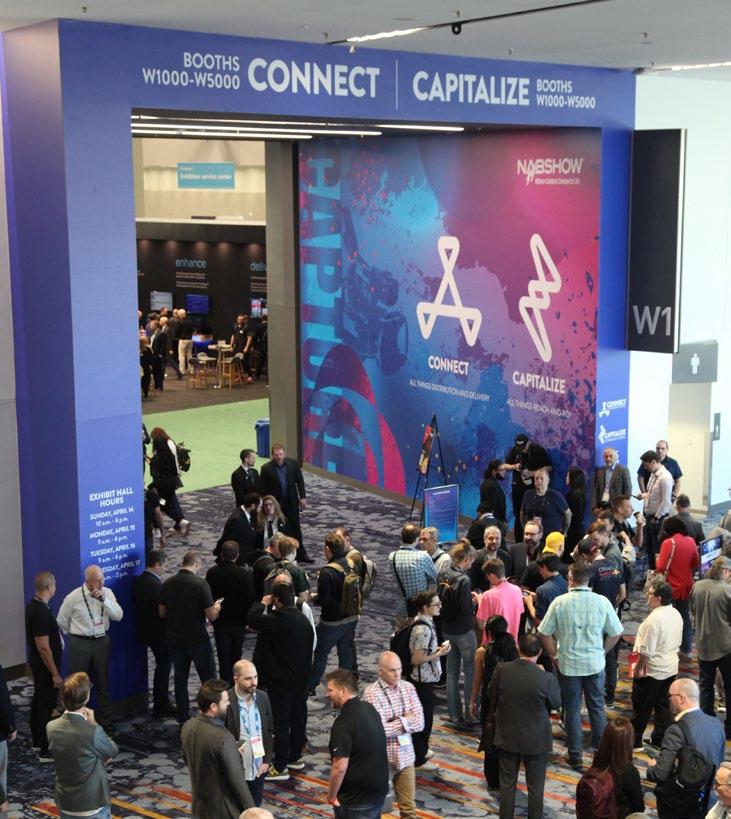
the ’40s that enables your station’s newscasters to include an old clip from that era as they cover the latest twist in a local neighborhood’s evolution. No, these are all demonstrations of what can now be accomplished with AI.
New uses of the technology, often leveraging fast-moving gains in generative AI em-
ploying large-language modeling (LLM), are sure to be spreading at an accelerating pace in the wake of broadcasters’ visits to this year’s NAB Show. For all the publicized drawbacks, including reliability issues and concerns about job losses, broadcasters appear to be more ready than ever to embrace the technology based on what they’ve experienced so far.
“I’m very encouraged seeing the [M&E] ecosystem collaborating to wrap our arms around what this means for our industry,” says Jason Williamson, managing director and AI leader for Deloitte’s Media Solutions & Engineering practice.
But it’s not easy in an environment where chaos is the norm. “We’re not making toothbrushes here,” Williamson says. “Hats off to the seasoned media engineering experts who are willing to shoulder the learning journey.”
With so many moving parts and so many different types of productions to cope with, there’s a “pretty broad spectrum” of AI applications to validate. “The trajectory is headed in the right direction,” Williamson says, “but when we can scale as reliably as we do with traditional workflows is harder to pin down.”
That’s one reason many broadcast groups remain fairly reticent about what they’re doing with AI. One station group executive, speaking on background, says his company is “still kicking tires, so we’re not out of our shell yet on AI. But we’re working very energetically to streamline our workflows. The question is, how do we do that without risking our product?”

There’s also the anxiety that still pervades broadcast workforces. “Given the sensitivities that AI can be used to cut corners in creating news and entertainment or do other things that can impact jobs, station groups are hard to crack at this point,” the executive says.
Broadcasters who advocate using AI think the best way to address such sensitivities is to pursue balanced and productive use of the technology that reduces time spent executing existing tasks while freeing people to pursue

new revenue-generating agendas. It’s a balance Scripps sees emerging as a natural consequence of how things work, notes Kerry Oslund, who works with Hartman on the Scripps AI team as vice president of AI initiatives.
“We’ve been able to shift our resources to where we have more people in the field to do a lot more neighborhood reporting,” Oslund says.
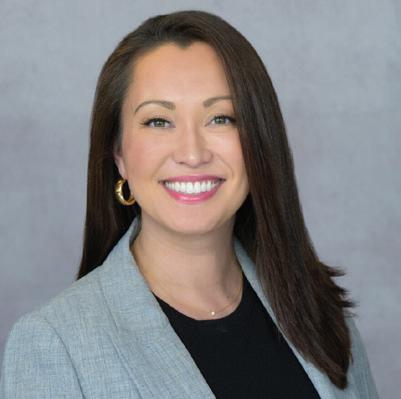
conference in November, Steib noted that, with a monthly audience of 100 million people showing “a boundless appetite” for content delivered via linear TV, streaming and mobile apps, Tegna’s use of “software automation and AI is going to help us to create more and better content.” That “helps us to win on the revenue side,” he added.
“2025 is when we want to take control of our archives. We’re sitting on a historic goldmine that’s very fragmented across the organization.”
CRISTINA HARTMAN, E.W. SCRIPPS
Similarly, Tegna president and CEO Mike Steib—who since taking over from retired CEO David Lougee in August has been anything but reticent about his enthusiasm for AI—recently stressed “the massive opportunity” AI brings to cutting costs and capitalizing on consumer demand for more local coverage. Speaking at Tegna’s third-quarter earnings
In Scripps’ case, augmenting the product mix starts with making better use of data. “2025 is when we want to take control of our archives,” Hartman says. “We’re sitting on a historic gold mine that’s very fragmented across the organization.”
The Scripps team has reached the point of using AI to generate reliable output from a
NAB Booth #W2814
massive repository of data manually uploaded from multiple sources. The next step is to eliminate manual uploading as much as possible from external as well as internal data sources.
When you can start to orchestrate information as needed at any given moment from in-house archives and external sources like Nielsen, Comscore, consumer sales trackers and financial databases, “you can start asking amazing questions,” Oslund says. Such massive powers of data orchestration can greatly facilitate advertising strategies, planning FAST and other content initiatives, negotiating with networks and getting the most out of ideas implemented by broadcasters across the country, he adds.
One concern Oslund has about the AI tsunami is the need to avoid being locked into inflexible uses of a vendor’s AI-enhanced solution. Speaking of vendors generally, he says, “We know you’re going to have AI solutions that work in your own environment, but are they extensible in a way that allows us to work with other systems in our knowledge base?”


This is an opportune moment for broadcasters to tap into the abundance of advertising-related vendor innovations on display at NAB Show. While most of these solutions are designed to work in the online streaming environment, where the pervasive market penetration of connected TVs (CTVs) allows broadcasters to deliver TV-caliber advertising over their FAST and other OTT feeds, there are also compelling AI-driven solutions slated for introduction at the show that can be used with both traditional and online TV distribution.
One example comes from 24i, the provider of a cloud-based converged OTT and traditional TV operations platform supporting UX, content management, personalization and third-party integrations. As described by Stuart Huke, head of product and support, 24i’s new AI-driven intelligence and monetization solutions will allow broadcasters “to better understand what’s on screen and who’s watching” and to track ad performance by “linking different data points” related to consumers’ social media interactions with online sellers of advertised products.
New applications of AI impacting advertising will also be highlighted at NAB by longtime recommendations-engine supplier ThinkAnalytics. “ThinkAnalytics has evolved as a platform where we not only help customers monetize but help them to assemble the content,” Senior Vice President of Products Chris McGuire says.
These new tools can be used to create audience profiles based on what people are watching and to facilitate finding and aggregating assets, including long-overlooked archived content, for use in online programming lineups matched to those profiles. “We’re saying, let’s look at the content; understand the content you’ve got,” he says. “Maybe you have audiences for that content you didn’t realize you had. We can augment your ability to target those viewers with our advertising product.”
NAB Show visitors will also be able to witness the early results of the big leap in use of AI that Amagi Technologies took late last year with its acquisition of Argoid.AI, a specialist in recommendation engines and programming automation for OTT platforms. As a starting point, Amagi will be introducing innovative approaches to creating and promoting FAST channels, Co-Founder Srividhya Srinivasan says.
One application can be used to automatically create FAST channels by scouring archives, metadata files and existing FAST channel
schedules to find and schedule programming that matches specific audience profiles the AI platform has developed from viewing patterns and other data. Another AI application, which is still in development, will enable personalized extractions from news and other programming that can be fed to viewers through social networks.
MediaKind plans to introduce automated approaches to developing promotional clips and building personalized customer playlists. The company is taking a vendor-neutral approach to supporting AI-based multilanguage translations of live commentary in news, sports and other programming, according to Head of Marketing Chris Wilson. “We want customers using our platform at the edge to be able to use any AI translation tool they choose.”
Of course, there will be many compelling new products on offer at the show that are unrelated to AI. One solution in that vein is a multistream viewing platform that MediaKind is introducing in partnership with Skreens, a supplier of content-compositing technology. The application, operating in real time on MediaKind’s MK.IO cloud streaming platform,
consolidates up to 16 individual streams for delivery over a single TV channel or video stream, according to MediaKind senior vice president of engineering Cory Zachman.
Audiences can toggle between multiple camera angles from a single event or programming from multiple channels, Zachman says, adding that, so far, customers are having a “ton of success” offering mixes of four or fewer feeds from different sports events. “It works on any device you have from old settop boxes to new connected TVs” without requiring additional bandwidth or any reduction in resolution or frame rates, he says.
Clearly, broadcasters will have a lot to absorb at this year’s NAB Show, especially in light of all the conference sessions they’ll want to attend while spending as much time as possible visiting exhibits. As usual, the show navigation challenge will be mitigated somewhat by the staging of many sessions in multiple exhibit hall locations, but, of course, keynotes, must-attend sessions at the Broadcast Engineering and IT Conference and much else will be staged in conference rooms. ●
To register for the show, visit nabshow.com












NAB Show’s focus on AI will include a variety of sessions and exhibit areas, including PropelME, a dedicated startup hub created through a strategic partnership between NAB Show and FBRC.ai that will feature companies leveraging AI to transform the broadcast, media and entertainment industry. Also, check out these selected sessions during the show:
● Legal Issues with AI Generated Assets or Content (April 6, 8 a.m.-10:30 a.m., Post|Production World)
● How AI is Transforming Caption Quality Assurance (April 6, 9:50 a.m.- 10:10 a.m., BEIT)
● DeepSeek and the New Reality: Progress or Pandora’s Box (April 6, 2:50 p.m.3:30 p.m., Creator Lab, South Hall Lower)
● Integrated Newsrooms with Generative AI: Efficiency, Accuracy and Beyond (April 7, 10:20 a.m.-10:40 a.m., BEIT)
● Is AI a Tool or a Threat to Creatives? (April 7, 10:45 a.m.-11:45 a.m., Post|Production World)
● Shooting For Generative AI (April 7, 10:45 a.m.-11:45 a.m., Post|Production World)
● Safeguarding Media Integrity From The Growing Threat of Generative AI (April 7, 11:30 a.m.-Noon, BEIT)
● AI-Powered Ad Tech: Maximizing Revenue and Balance in a Dynamic Advertising Landscape (11 a.m.11:30 a.m., April 8, Theater 2, West Hall)
● Safeguarding IP in the Era of AI: From Deepfakes to Digital Deception (April 8, 11:45 a.m.-12:30 p.m., Creator Lab, South Hall Lower)


By Phil Rhodes
For much of the history of broadcast television, the state of the art has often advanced gradually, and evidence of a trend has only emerged in the fine details of technology and technique. More recently, though, some potentially farreaching ideas have been easier to identify, with networked video and HDR becoming more widespread as barriers to entry fall.
If the 2025 NAB Show has a predominant theme, it is a spike in interest around cinema techniques for broadcast, according to James Coker, founder of Funicular Goats, a multicamera cinematic production solutions shop. Speaking days after returning from the Super Bowl, where he held engineering and technical responsibility for cinema cameras, Coker says he thinks such techniques are becoming more of a norm.
“I know a lot of people are trying to do it; I’ve been doing this for around 15 years,” he says. “I was an engineer for eight or nine years doing cinematic multicam, and people lean on me to put a team together to make these projects happen.”
Motivation is straightforward, Coker says, even as technology advances. “A lot of the big directors want to put on an amazing-looking show and it gives them that next step up,” he says. “I’ve taken out everything you can think of. When I first started, we used different tools to get it done in the same kind of fashion but not as flawlessly as we’re doing now. Now, I can go on to a live event and I’m not extremely concerned. We’ve streamlined the technology. When I get the opportunity to pick a camera I tend to steer them toward [Sony’s] Venice 2.”
Lens and color-processing choices are a matter for discussion. “I’ll work with the director,” Coker continues. “If the show wants a vintage look, we’ll get vintage glass. I use a lot of the old Cookes; on the next show I’m using Panavison glass.”
At the same time, modern conveniences are helpful, particularly Fujifilm’s capable 25-1,000 mm PL-mounted box lens. “That’s

Blackmagic’s Ursa Broadcast G2
a different story—when we’re doing concert films in a stadium you may have 140- or 180foot throws, because you can’t get closer from the front of the house,” Coker says. “Before we were using a 3:1 from Panavision.”
At the same time, broadcast manufacturers are addressing the demand for Super-35mm directly. Grass Valley Director, Product Marketing Klaus Weber describes the company’s debut, to be shown in Las Vegas.
“The LDX-180 has a new, large single imager,” he says. “[It has] the processing power of the 150, but instead of three imagers we have one Super-35mm imager. It’s not adopting an imager made for cinema camera or stills, camera … it’s a new imager developed for this camera.”
Fitting that into a familiar workflow demands visual compatibility with existing cameras, Weber says, and the company has ensured that “the processing can stay the same; the color matrices and all the HDR/SDR processing can stay intact. Now we can mix and match with the three-imager camera, the 135 or 150.”
The aim here is compatibility rather than identicality, given the intent is to produce a unique look. “There will be some colors or situations where one camera will look different to the other if you compare them side by side,” Weber adds.
Nevertheless, he confirms, “It means the camera shader who sits on his creative grading panels and has, on the left, a 110 to shade, and on the right some 135s, there are the same controls, the same features, and one production can mix them with few challenges.”
Blackmagic Design has approached the broadcast market from a different direction. One recent innovation has involved a duallens camera designed in conjunction with Apple to capture footage for its Vision headset.
Blackmagic’s keenest customers have sometimes grown up with its products, Director of Sales Operations, North America Bob Caniglia says. “What we’re finding more and more is that these kids who started with these things—they’re now in their 40s, and they’re making the decisions,” he says.
Caniglia’s involvement arises from his prior association with da Vinci Systems, the company that built Resolve, which has become something of an entry route for new people, he says. “I had a broadcaster say recently how many people are using Resolve—anyone who entered the company in the last 10 years, that’s all they use,” he says. “The legacy people still use other things, but there’s an avalanche of Resolve talent coming through.”
With a portfolio of Super-35 mm and full-frame cameras, the company has found itself well-placed to capitalize on the popularity of big chips for broadcast.
“Ursa Broadcast G2 has cinematic qualities,” Caniglia says. “It has a 6K sensor, it comes with the B4 mount attached but an EF lens mount is included with it, and that camera continues to get a lot of good use. Our resellers often bundle it with a B4 lens—Fuji came around and said, ‘Can we bundle these?’ and Blackmagic doesn’t sell direct so we introduced them to our team.”
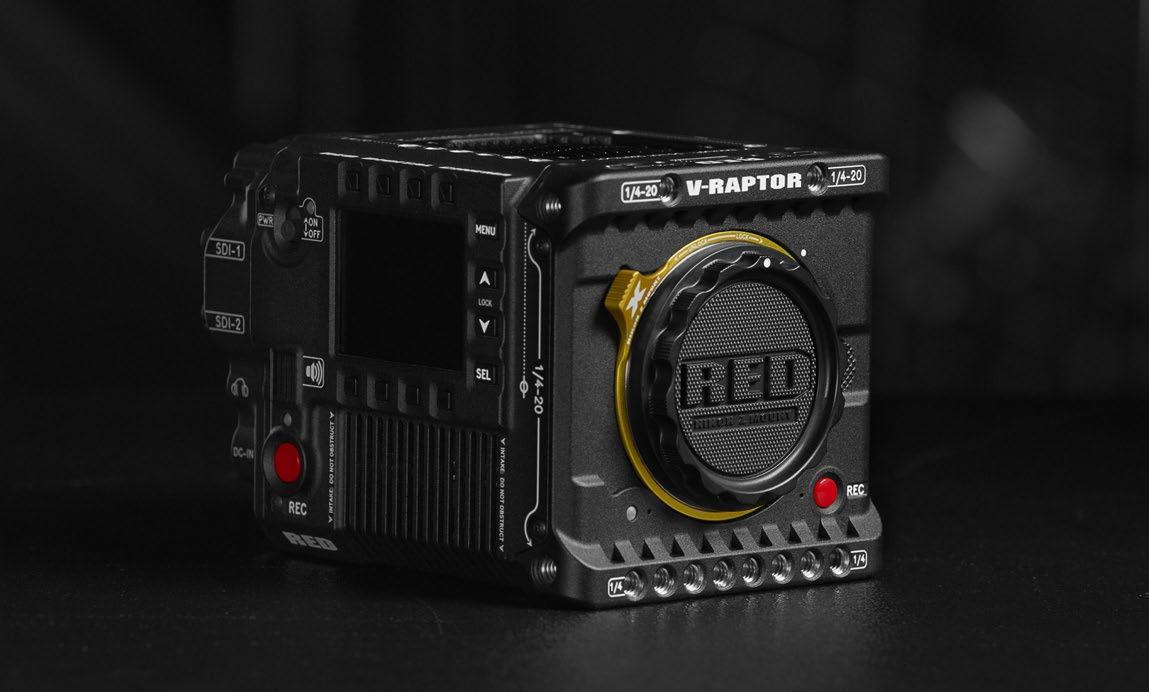
The company’s roots are in input/output and conversion, and Caniglia describes how recent ideas have made setup quicker and easier. “We introduced some new ST 2110 products which will be able to provide power with a single Ethernet cable. If you bring the four-input base station, and four cameras, and plug them in with four Ethernet cables, that’s a significant time savings.”
Recent releases have been most clearly
targeted at high-end cinema, although Caniglia describes a broadcast market which will find a use for almost anything.
“Many of our cameras are used in 4K in venues because they’re filling the screens with 4K. If you’re using it in HD you can get up to 150 frames,” he says. “Now, the new 17K camera is already being requested because of the ability to shoot such a wide area and [crop] in to get 4K out of it, much like the 12K cameras.”
There is perhaps a parallel to draw between Blackmagic and Red Digital Cinema, which also finds itself providing equipment for a market in which it was not originally involved. Having teased a broadcast-oriented system for its cinema cameras at the 2024 NAB Show, Red says it will demonstrate the new hardware in full this year.
Jeff Goodman, vice president of product management at Red, describes it as “a module which goes on the back of the camera and allows you to operate in an SMPTE broadcast environment. There’s a monitor on the back, return video … The other thing that took a lot of work, and credit to our engineering team, we created a new [color] pipeline—you put the camera into broadcast mode, and shade the camera from an RCP the same way you’d shade any other.”
Perhaps unusually, the company is keen to discuss something which might be called a “parallel workflow” feature designed to get the most out of live production that might

also be recorded. The new system, Goodman says, “supports Red Connect, our 10-gigabit connection, which allows you to do live 8K, ST2110, or to take the R3Ds off in real time, live to headset applications, live to domes such as Cosm and others. You can think of it as like what you're writing to the media on the camera you’re writing to the network.”
Red’s recent acquisition by Nikon has also led to lens-mount options likely to be popular in both single- and multicamera production. “We’re announcing a Z-mount version of our Komodo-X and Raptor-X,” Goodman says. “Z has a shorter flange depth, so there’s a lot of lens system opportunities which will allow people to use lenses they already own. The first party one we’re going to provide is the titanium Z to PL adapter, and Z to PL with electronic ND which allows you to control it through the camera system.”
The company’s approach, it seems, encapsulates much of what has garnered industry interest in cinema cameras for broadcast. “If you shade in broadcast color mode, record the R3Ds and you go to post later, you have the option to switch back to the cinema color workflow,” Goodman says.

“You’re adopting a cinema camera for a few reasons, one of which is shallow depth of field but also the high dynamic range.”
Overall, the move toward cinema cameras is a drift rather than a rush, probably gentler than the move to HD. Even so,
the competitiveness of broadcast, and the ever-rising expectations of an audience accustomed to high-value OTT drama, has made that drift somewhat continental in nature—gradual, certainly, but impossible to deny and just as hard to resist. ●

Expect to see more personalization, immersive tech fueled by IP, AI
By Kevin Hilton
In technological terms, a trend can have several different interpretations or even stages. It can be applied to an emerging audio technology that is not yet fully mature or adopted. Once uptake is underway a trend becomes current, as an increasing number of broadcasters begin to follow the initial adopters until that particular technology is firmly established in the market.
This does not happen immediately, which means an innovation can keep appearing at NAB Show for several years and seem like it is not that new at all anymore.
The reality is that implementation often takes a long time, as broadcasters’ replacement cycles or plans for new facilities come around and they get ready to install what are still the latest systems. This point is illustrated by Costa Nikols, strategy adviser for media and entertainment at Telos Alliance, who quotes Devoncroft Associates research showing that upgrading the audio infrastructure, which had been well outside the “Top 10” of broadcast priorities, was now in the “Top 5.”
“There’s a lot of investment going into improving audio quality, incorporating Next Generation Audio [NGA],” he says, referring to an umbrella term to define immersive and personalized audio experiences. “That also brings all these immersive experiences and customization and personalization features to the table, but how long is that going to take?
“I think we’re just at the beginning of something that’s going to be exciting and wonderful,” Nikols adds. “But if you look at the early adopters, it’s generally the national broadcasters that have adopted SMPTE ST 2110 and 2022-6 initially. Slowly, it will make its way out to the station groups and Tier 2 and Tier 3 broadcasters.”
The most visible NGA system is Dolby Atmos immersive audio. Atmos is specified by many of the
leading streaming platforms, including Netflix and Amazon Prime Video, but it’s not yet a standard part of linear broadcast transmissions. But, as Nikols points out, there is a growing market for enhanced sound that goes beyond TV and into mobile and other areas.
“Around the time of last year’s NAB Show, the number of devices that supported Dolby Atmos was 1.5 billion,” he says. “The most recent figure is over 3 billion, so it pretty much doubled by the beginning of this year. But the market, as far as the content providers are concerned, is not really delivering on the capabilities of the consumer electronics that are already deployed.”

vast majority of distributed content is still not immersive.”
A parallel situation exists with the adoption of Audio Over IP (AoIP), Goodman adds, noting that Calrec is still selling consoles that are not SMPTE ST 2110-compliant.
“AoIP is getting towards being the norm, but it’s not across the board yet,” he says. “And you’ve also got different types of AoIP. On smaller systems, people are using Dante for connectivity and while it’s IP, it’s not a 2110 infrastructure.
Professional equipment is also ready for the wider rollout of NGA and immersive systems, with all leading mixing console manufacturers accommodating technologies such as Dolby Atmos on their new and current desks.
“Global events often incorporate NGA formats like Atmos as they tend to push the technological boundaries,” Christian Struck, senior product manager for audio infrastructure at Lawo, says. “NGA has been a topic of interest for over a decade and we have integrated these capabilities into our systems, both physical and virtual. There is a gradual increase in demand for immersive audio and it remains a forward-looking feature for people exploring advanced audio workflows. Real-time metadata transport as defined in SMPTE 2110-41 will also help push this.”

Henry Goodman, director of product management at Calrec Audio, agrees most audio consoles now on the market enable immersive mixing, but does not see it as a priority for many viewers.
“Whether the public is taking advantage [of what immersive programming is available] is still quite a big question,” he says. “And the
“For larger, major investments people are certainly building AoIP infrastructures, but there’s still some way to go [because] if you’ve got a lot of investment in baseband audio and video, it’s not a slam dunk that when you upgrade one of those studios you would necessarily choose to go IP because of the impact it has on the rest of the system,” Goodman says.
Phil Owens, senior sales engineer for Wheatstone, agrees that although old technologies continue to play a part in audio installations, there is now more of a swing towards newer formats.
“While legacy equipment still needs to be incorporated, the backbone of pretty much all new systems will be IP,” he says. “The flexibility of an IP network is the primary driver for this. As full 2110 networks become more widespread, stations are adapting the IP approach even if they don’t implement 2110 right away. Having a basic IP infrastructure keeps that door open.”
IP also plays a key role in remote and distributed production, which, again, have been a consideration for over five years and, after getting a boost during the pandemic, are growing in scope and reach.
“Distributed production is not just about saving costs, it’s about utilizing the facilities that you’ve got more effectively and more efficiently,” Calrec’s Goodman observes. “And we’ve had quite a lot of discussions with
broadcasters about them widening their content offering with more niche-type sports because, by looking at doing things with remote production in a more distributed way, they can then justify covering sports that they would never have been able to justify covering before.”
Lawo’s Struck agrees that the rise of remote production—or REMI (remote integration)—models are another significant trend. “These centralize resources while enabling distributed production across multiple locations,” he says. “This approach offers flexibility in how equipment is bundled and deployed. Automated productions also remain a consistent focus. They are particularly well-suited for news programs and scripted productions, though they are not applicable to more complex, dynamic productions.”

that—like other technologies before it—this is not happening quite yet.
“When we talk about AI, sometimes it’s just confused with automation,” Nikols says. “Automation technologies have been around for a while and they allow you to have complex workflows with lots of ‘if-then’ decisions.
Of all current trends, artificial intelligence

(AI) will have a high profile at NAB Show, with initiatives such as the PropelME startup hub, showcasing companies using the technology to change how the broadcast, media and entertainment market operates. While most on the audio side of broadcasting agree AI will make an impact on sound, the view is


“And for the most part AI is that,” he added. “But Generative AI coming into the game allows some really cool stuff to happen with auto-mixing and can determine what content really needs to come up and how to adjust for all the other different channels that don’t necessarily need to be part of the main audio all the time.”
As familiar as some—or all—of this year’s audio trends are, they are playing an important role in shaping the future of broadcasting, even if their full implementation is not happening just yet. ●




REPLAY FOR EVERYBODY, EVERYWHERE.
RiMotion is an easy-to-install replay solution that can be implemented almost instantly in broadcast environments of any scale. It streamlines traditional and modern workflows and provides real-time performance, even when working remotely.





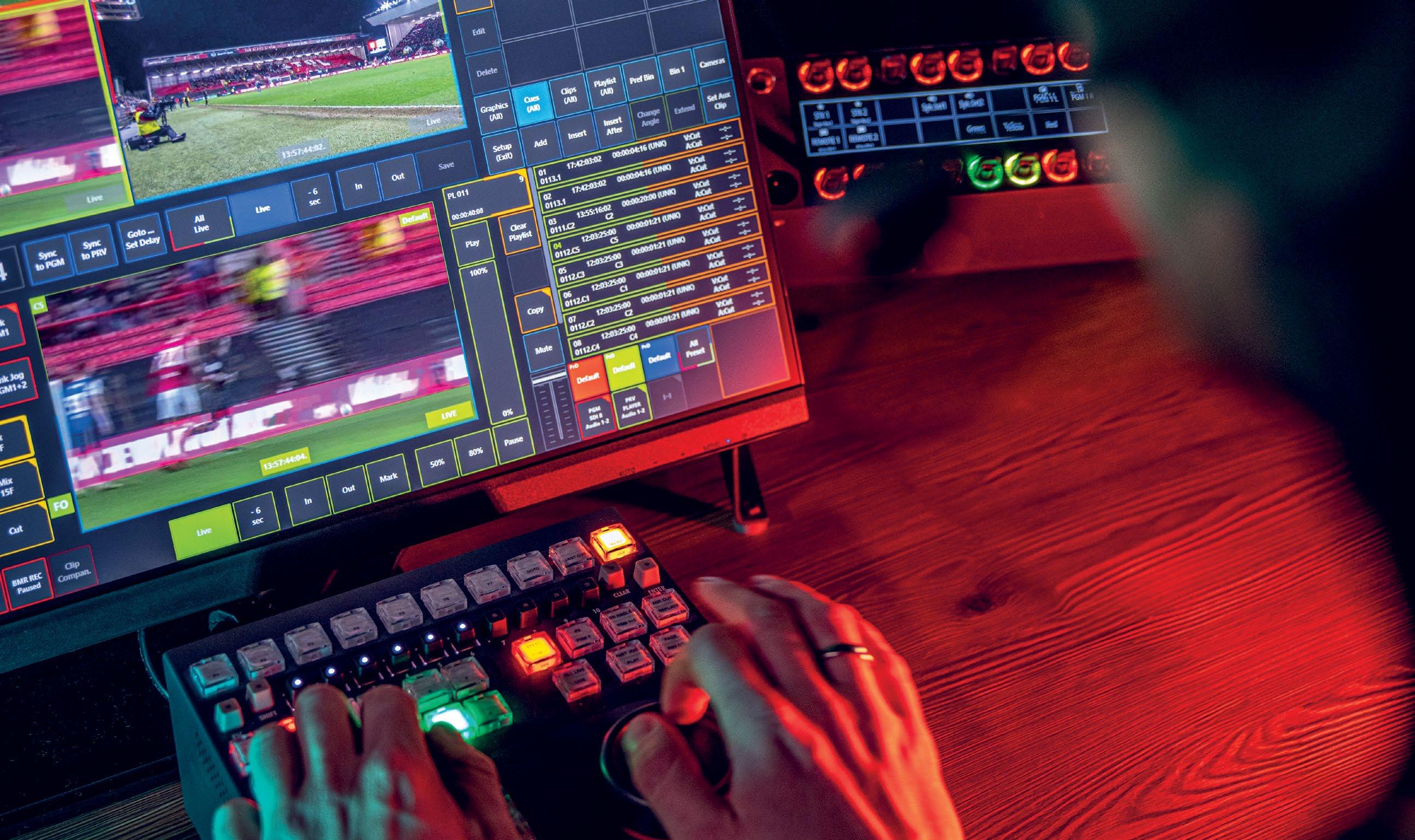
By David Cohen
As the annual pilgrimage to Las Vegas for NAB Show 2025 nears, it’s time once again for industry suppliers to put forward their solutions and tools for all things content, creation and monetization. AI is, of course, top of mind for anyone in the business of developing and marketing new technologies and will undoubtedly be a big trend to follow before, during and after the big event. But what about the ongoing transition to IP and the promise of greater flexibility, scalability and efficiency?
Not to worry, experts say, IP is here—and here to stay. In fact, according to the annual Big Broadcast Survey produced by industry research and analysis firm Devoncroft, IP networking and content delivery has ranked as the No. 1 most commercially important tech-
nology trend for four years running. It’s just that IP isn’t everywhere yet and likely won’t be for quite some time.
Going IP takes training, according to Stan Moote, chief technology officer for the International Association of Broadcast Manufacturers (IABM), the industry’s trade association for technology suppliers. “With SDI there are patch panels and one can trace/bypass the signal flow in an instant,” Moote said. “With IP it is an entirely different approach, and these skills must be learned.”
Like most innovations and technological transitions, the move to IP has been subject to circumstances and making the right decision based on your respective business goals. Whether you’re operating local, remote, on- or off-prem, using SDI, IP or a combination of both, there are definite chal -
lenges and benefits to every scenario.
“I’m super-positive on moving to IP because of the huge benefits,” Moote says. “Actually, though, in some cases, SDI may still make perfect sense, especially if the facility is small, has little interest in live remotes or scalability and has no concern about the constant need for different formats and flavors of both video and audio.”
What, then, can folks planning their NAB calendars expect to see? The benefits of IP seem to be making the largest impact in the production world in several different ways. One is by removing the limitation of distance inherent in SDI connectivity. Using the ubiquitous availability of IP networks to their advantage and leveraging cloud applications as well, broadcasters have incorporated IP into their workflows strategically to gain efficiency. Industry suppliers have countless ways to deliver efficiency with IP.

“There are definitely specific cases now where it’s obvious that IP provides a cost-effective option that didn’t previously exist,” says Imagine Communications Senior Vice President of Product Management John Mailhot, who received SMPTE’s 2024 David Sarnoff Medal for his work in developing the SMPTE 2110 standard.
“For years using SDI, the limitations of the geometry of routers became an impediment— there was constant fighting over who gets which router ports,” he says. “In IP, every single thing is hooked to the network and inherently routable.”
This key characteristic of an IP network not only creates enormous flexibility but also makes an IP-enhanced workflow almost infinitely scalable. Former SMPTE President Renard Jenkins, president of I2A2 Solutions and
Labs, a technology consultancy and R&D lab focused on innovation, says he has seen this scalability have a tremendous impact on the creative process, as well.
“With video over IP, you can easily increase the number of inputs, which means that you can have better coverage for a single event … more cameras, more microphones, more inputs into your router then you would have if you were dealing with tons of copper cables,” Jenkins says. “This increase in content gathering, especially in live sports and events, allows you to have better, and more, coverage, which on the back-end allows you to create more engaging content and have better creative flexibility.”
This flexibility leads to more-efficient workflow setups that enable users to configure their equipment based on the specific needs of one show and then easily reconfigure for another without the need to physically move wires.
One of the keys to capturing these efficiencies is by incorporating a workflow control and orchestration system that allows operators to easily manage a combination of traditional SDI signals along with IP. This
is critical not only because the technology works so differently, but because there’s a skills gap—most broadcast engineers weren’t trained to operate within IP networks because they had traditionally been the domain of IT professionals.
Mobile production leader NEP began adopting IP technologies into its workflows early and provided some unique insights in a case study recently published by Cisco Systems.
“We deliver a remote production, a centralized production, where we put product people in one place and we have cameras and lenses in another place across the wide area network—and we’re doing that basically every day,” Marc Segar, NEP Group’s senior vice president of technology, explains. “What we holistically want to do is use hardware wherever it happens to be, and for that you’re going to be completely reliant on the wide area network and the infrastructure you put underneath. But you can’t do that
“For years using SDI, the limitations of the geometry of routers became an impediment— there was constant fighting over who gets which router ports. In IP, every single thing is hooked to the network and inherently routable.”
JOHN MAILHOT, IMAGINE COMMUNICATIONS

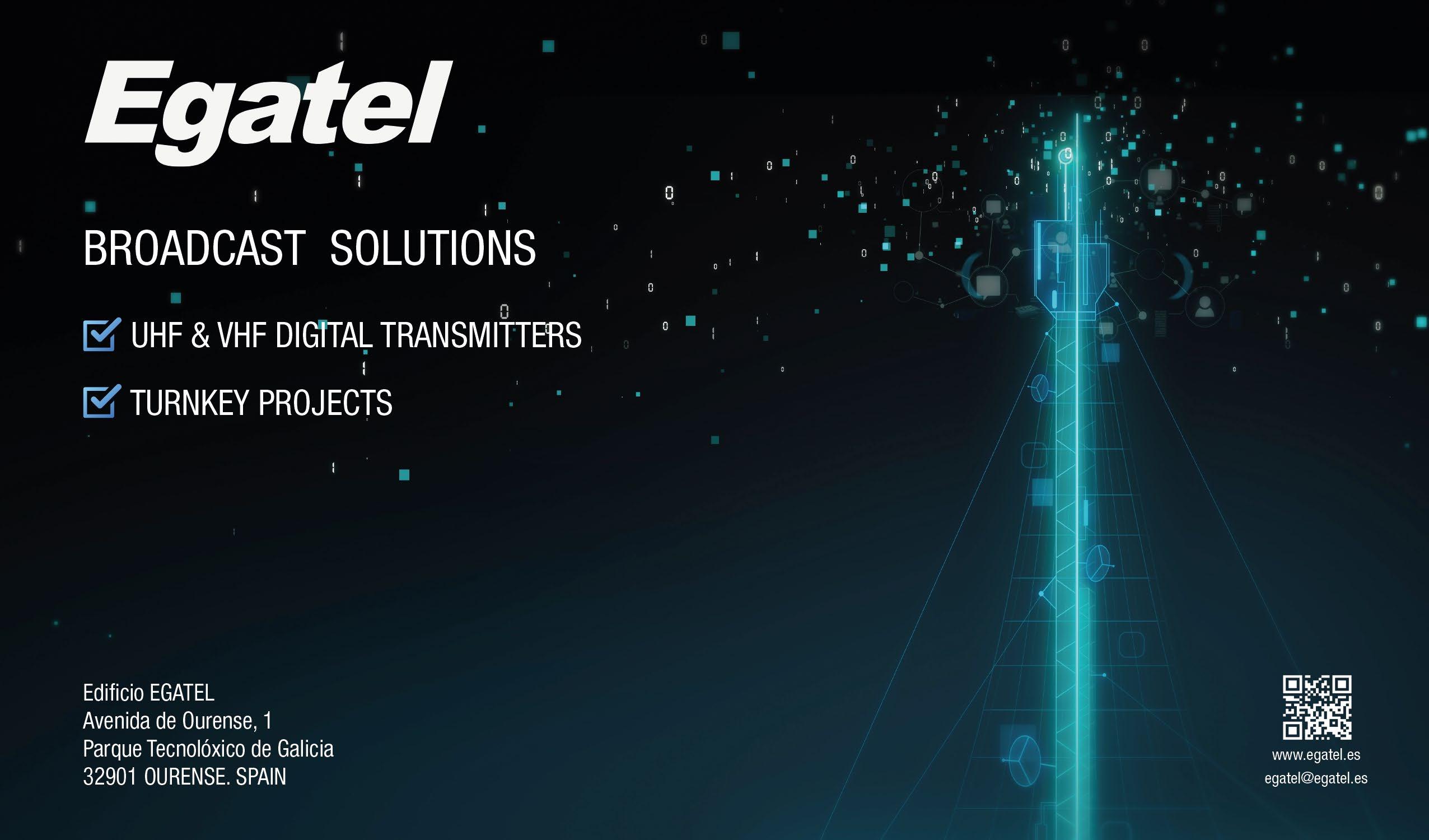
unless you can manage the network and you have control over the network and you have the right tools to be able to do that well.”
Adds Jenkins, “Control and orchestration tools, with an intuitive UI design, that bridge the gap between (networks built using) copper cable and IP networks—along with the knowledge that you need to understand how to operate in both spaces—is paramount for the growth of what we’ve begun to accomplish within our industry today.”

way and create the same on-air look and use the same playout chain.”
The importance of developing consistency in how these so-called hybrid networks are managed can’t be understated.
Much as ST 2110 opened the door to interoperability and relatively smooth sailing in IP content transport, standards are needed to ensure the same can be applied to workflow setup and control. IABM and SMPTE are working together to bring this to fruition.
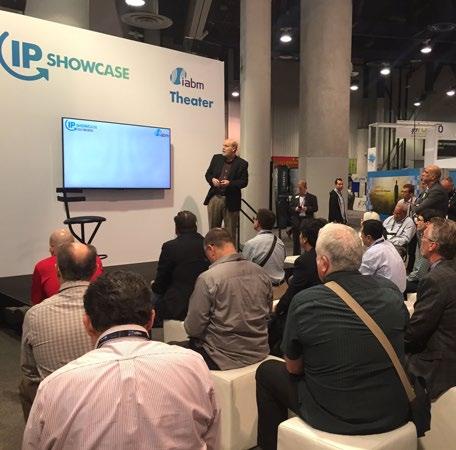
Many vendors will certainly have control and orchestration for IP and hybrid networks near the top of their “things to see” lists at NAB Show. Imagine’s Aviator Orchestrator is one example.
“What Aviator does is it uses ‘cloudinspired’ deployment and management mechanics to also deploy and manage applications on-prem,” Mailhot explains. “So, you can deploy on-prem or you can deploy to the cloud over IP. You can use things the same
Moote says the IABM, in conjunction with SMPTE, has established a control-plane working group that is developing an open-source, open-standard approach to this challenge. Once it’s ready, a control-plane standard should provide a smoother road to incorporating IP into existing workflows, or new ones, that can easily scale for even the largest and most complex productions.”
Vendors and broadcasters alike are invited to check-in with IABM in the North Hall (N257) while in Las Vegas to learn more. ●
The IP Showcase, sponsored by AIMS, AMWA, and VSF, will return to the 2025 NAB Show as part of the Tech Chat Theater in the West Hall. This year’s IP Showcase will specifically highlight the whirlwind of activity as IPMX becomes a fully complete standard, as well as how the tech behind AV-over-IP and IP for broadcast are converging.

By James Careless
It’s become a virtuous circle: Advances in graphics and editing technology lead to higher quality and better-looking content, especially on mobile devices. The audience becomes accustomed to these improvements, which drives the need for further advances in improved quality and content appearance.
Advanced graphics and editing are the unsung heroes of modern video production and the trends and technology that support these heroes will be on full display on the 2025 NAB Show floor in Las Vegas.
As consumers become accustomed to high-quality visual content across all their devices, broadcasters are feeling the pressure to meet these expectations with their own content to stay competitive, according to Sarah Jones, senior technical solutions specialist for Blackmagic Design, Americas.
“This demand means broadcasters are upgrading production equipment and investing in technologies capable of delivering higher resolutions and cinematic images,” Jones says. “While this could impact production budgets, today’s technologies are more accessible than ever before, packing professional
features into affordable budgets, so we’re seeing a reduction in the barrier to entry when it comes to the use of cutting-edge technology.”
Uniqueness is also becoming more important in the video graphics and editing sector. With content providers serving out so many channels in an ever more-crowded video universe, being different and eye-catching is vital for building audiences.
As a result, “a significant trend we’re seeing at ENCO Systems is the need for both customizable channel branding and dynamic graphics insertion,” says Bill Bennett, media solutions and accounts manager for the company.

system to separately brand each signal.
“Broadcasters and streamers often have the same content feeding several different channels, each requiring its own branding, so they rely on our ClipFire video playout

“Furthermore, these same folks like to host cost-efficient automated channels with dynamic, compelling graphics which change with real-time data [think weather or sports], so we’ve been able to help them do that, too,” Bennett adds.
Of course, serving out all these extra channels costs money, which is a commodity that content providers cherish. That is why economy is a third trend influencing the graphics and editing sector, with vendors doing their best to devise solutions that deliver advances without emptying the bank.
“Whether an individual content creator or a large broadcaster, many are looking to achieve more with less,” Vizrt Chief Marketing Officer Chris Black tells TV Tech. “They’re looking for workflows and technology that can support them creating more content, faster, with multiple aspect ratios for dual outputs, leveraging their current investment without the need to add in new tech, or hire new people. Two big focuses we are seeing are the use of dual-aspect ratios for social media content alongside linear or multiregion advertising to monetize content across various demographics.”
At the same time, production teams are seeking new ways to scale up their operations that are inherently flexible and efficient. “As a result, we are seeing the further democratization of media technology,” Black says. For instance, “cloud-native and web-based HTML5 graphics platforms with intuitive UI are offering existing graphics templates for individuals to use, increasing efficiency in time to air.”
Blackmagic Design will have two booths in South Hall Lower, (SL216 and SL8016), and will showcase cameras, DaVinci Resolve postproduction software and hardware, its wide range of SMPTE-2110 IP video products, the ATEM family of live production switchers, streaming solutions, network storage and more, according to Jones.
“Pairing our URSA Cine Immersive and DaVinci Resolve provides an end-to-end workflow to support these evolving interactive needs, providing the means to capture and edit 8K, 3D video with a 180-degree field of view,” Jones says. “The Blackmagic URSA Cine Immersive is the world’s first com-
mercial camera system designed to capture Apple Immersive Video, and DaVinci Resolve provides the ability to edit Apple Immersive Video for the first time.”
“Two big focuses we are seeing are the use of dual aspect ratios for social media content alongside linear, or multiregion advertising to monetize content across various demographics.”
CHRIS BLACK, VIZRT
When it comes to automating time-intensive tasks, DaVinci Resolve Studio’s Neural Engine-backed AI tools can significantly speed up workflows. “This comes into play,
for example, with our facial recognition technology, which can automatically detect, track and organize footage based on an individual’s face, eliminating the need to search and organize manually,” Jones says. “Similarly, smart reframe tools intelligently resize and reposition footage to fit various aspect ratios, facilitating content repurposing across platforms.
ENCO Systems will showcase its ClipFire flagship multichannel playout and ingest platform which can service a lot of needs (and channels) from a single box, according to Bennett.
“We’ll be showing where we think the future of broadcast graphics are headed, thanks to our Qimera Virtual Production produc,” Bennett says. “Built on the massively popular Unreal Engine, Qimera generates stunning truly three-dimensional graphics which humans can interact with and walk around in 3D space, complete with graphics (and backgrounds) that move as the humans do in-camera, making for some incredibly compelling video. We’ll also be showing the new MOS newsroom automation hooks we’ve built into Qimera recently, to automate the data that’s making those 3D dynamic graphics so compelling.”



Also in the West Hall, Vizrt will demonstrate Viz Connect Audio, “which offers unparalleled connectivity, visibility, and control of audio sources on an NDI network,” Black says. “We are particularly excited about Viz Connect Audio, and how it seamlessly integrates with our flagship TriCaster, the TriCaster Vizion.”
This year’s show will be the first time that the multi-award-winning TriCaster Vizion will be demoed at NAB Show, offering the latest in IP connectivity, configurable SDI I/O, powerful switching, audio mixing and stateof-the-art graphics. “Show attendees can also expect to see advancements in Viz Engine’s seamless integration with Unreal Engine,” Black says. “Building on benchmarks for ease of use and performance, Vizrt will demonstrate—via Viz Arc—enhanced control of the latest versions of Viz Engine 5 and Unreal Engine 5.”
Vizrt also plans to display its latest advances in immersive graphics, cloud, automation, and AI. “We aren’t just showing technology,” Black concludes. “We are showing real-world solutions that solve everyday production challenges across three experience areas and several solution pods.” ●






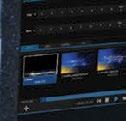

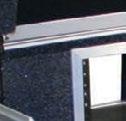















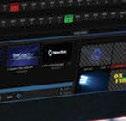
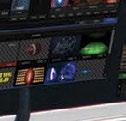


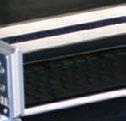






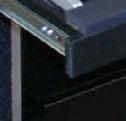








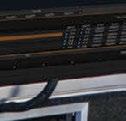



















































By James E. O’Neal
With ATSC 3.0 (aka NextGen TV) now on the air in some 75 U.S. markets, more and more emphasis is being placed on this secondgeneration digital over-the-air broadcasting standard, not only for its ability to provide viewers with enhanced services, but also in advanced emergency alerting and datacasting, which has the potential to generate actual revenue streams for stations soon.
Also on tap is the Broadcast Positioning System, which has the potential for ATSC 3.0 to supplement current GPS navigation technology.
It will be difficult not to notice NextGen TV’s presence at NAB Show, with numerous equipment suppliers displaying gear attuned to ATSC 3.0, and all the latest applications
featured at the Advanced Television System Committee’s booth in the West Hall of the Las Vegas Convention Center (W3056).
“We will feature consumer products, new software options for receivers, several examples of High Dynamic Range and a variety of new capabilities for ATSC 3.0, which can both deliver better television and also serve as a vital platform for datacasting and a precision timing system that can complement the existing system based on GPS,” ATSC President Madeline Noland said. “Expect to see the consumer options available and coming soon to retail, interactive functionality that allows local stations to take full advantage of both the over-the-top and overthe-air capability of ATSC 3.0
and a variety of methods for local insertion of metadata to greatly enhance the audio and video services for viewers.”
‘THE FUTURE OF TV’
A big sticking point in allowing broadcasters to offer many of NextGen TV’s enhancements is the limited bandwidth afforded in today’s “channel-sharing” arrangements required to deliver legacy ATSC 1.0.
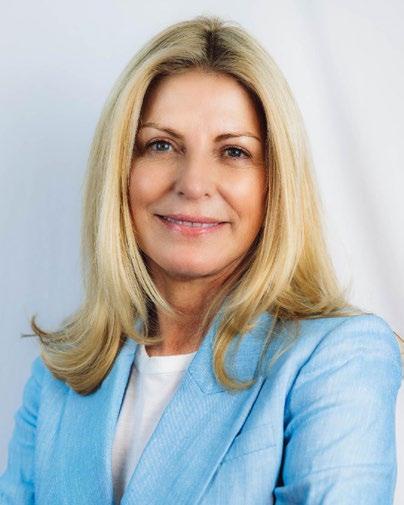
Anne Schelle
In January, the long-awaited report from the “The Future of TV” initiative launched by the Federal Communications Commission in 2023 and managed by the National Association of Broadcasters was released, and observers say it will be on the minds of many.


“I will speak personally about the report, and most importantly about what the joint activity has allowed to happen,” Mark Aitken, senior vice president of advanced technology at Sinclair, says. “While there were many voices at the table, broadcasters have become united around the fundamental role local television plays in the marketplace. The importance of that role brings a sense of unity to the larger mission of our industry, the license holders that hold a responsibility to uphold the public’s interests.”
Adds Pearl TV Managing Director Anne Schelle: “The release of the report [provides] a platform for the various stakeholders to come together, gain insights and learn about the ATSC 3.0 ecosystem and how a transition could be enabled. Broadcasters need to get prepared for what I believe will be an accelerated timetable for deploying ATSC 3.0 services. Attending the NAB Show is crucial, as it offers a unique opportunity to witness these innovations firsthand, network with industry leaders and gain insights into best practices.”
One of the more promising applications for NextGen TV broadcasting is the ancillary transmission of data, or “datacasting.” Last year’s NAB Show saw the launch of Sinclair’s Broadspan datacasting platform, which enables data distribution in markets where Sinclair stations are offering 3.0.
In January, Sinclair announced a partnership with E.W. Scripps Co., Gray Media, Nexstar Media Group to launch Edgebeam Wire-
less to provide expansive, reliable and secure data delivery services, targeting industries that need to send data to multiple customers, often in real time.
“This trend will be showcased at the NAB Show, with presentations highlighting its benefits and showcasing real-world applications,” Winston Caldwell, the new engineering lead at the Pearl TV consortium, says. “Broadcasters should certainly delve into the possibilities of datacasting. They’re already making waves in this field.
“Additionally, we are seeing participation from players not traditionally involved in the broadcast space, engaging in proofs-of-concept and exploring potential collaborations,” Caldwell adds.
Aitken says Edgebeam “will be a well-funded effort that holds the potential to transform a large part of our industry’s future revenue opportunities. I expect conversations will percolate everywhere.”
NAB Show’s BEIT (Broadcasting Engineering and IT) Conference, set for April 5-8 in the West Hall, allows attendees to drill down into these and other new use cases for NextGen TV.
In “Cloud-Based Advanced Emergency Information (AEI) System for ATSC 3.0 and IP Delivery,” Jason Kim, a senior systems engineer at ONE Media Technologies, says he “will highlight how broadcasters can utilize next-generation technologies, such as ATSC 3.0 and cloud-based systems, to enhance
emergency alerting and deliver more reliable and timely communication with localized detail for affected communities.”
Another BEIT session highlights a NextGen TV “trifecta” of sorts—“ATSC 3.0 Spectrum Utilization, Cloud Deployment Considerations and A Unique Public Safety Use Case.”
“With the current lighthouse situation, we have very limited spectrum for 3.0 services,” says Session Moderator Joe Seccia, regional director of RF transmission at TelevisaUnivision, says. “Using novel implementations and technologies such as scheduled physical layer adaptation can help broadcasters get even more out of their multiplexes.
“Most cloud infrastructures are built around IP unicast, while 3.0 relies on multicast for efficient delivery,” Seccia adds. “Factors such as packet loss can lead to service interruptions and less than reliable delivery. We’ll hear about ways to make the cloud work in the 3.0 domain.
“[There’s] an innovative idea to support wildland fire operations with an airborne or mobile 3.0 transmitter—a reliable, resilient and secure datacom system that’s ready to support emergencies on demand (and) with the ability to send real-time positioning information of uncrewed aircraft to others in the field, allowing for safer and more efficient use of uncrewed aircraft,” Seccia adds.
DEMO COMBINES DVB-T2, 5G AND 3.0
ATSC 3.0 is also involved in a slightly different way as part of a planned “direct-broadcast-to-handheld devices” demonstration at the Institute of Electrical and Electronics Engineers (IEEE)’s Broadcast Technology Society booth.
Peter Siebert, who recently retired as the executive director of the DVB (Digital Video Broadcast) television organization, is hosting the demo, which not only involves NextGen TV, but also DVB-T2 and 5G Broadcast transmissions.
Siebert says the planned demo recognizes that there is no “one-size-fits-all” over-theair television broadcast standard and NAB Show attendees need to be aware of modalities in addition to ATSC 3.0 for delivering video content to consumers.
“These are the three relevant second-generation DTT [digital terrestrial television] systems for transmission to handhelds,” Siebert says. “With this demo, I want to show that the IEEE’s BTS is open to all broadcast-related technologies and not only focused on the North American market. I also want to show that DTT to handhelds is possible in principle and that several solutions exist.” ●
AG-CX20, HC-X1200 and HC-X2100
Panasonic Connect has introduced the AG-CX20, HC-X1200 and HC-X2100 4K 60p 10-bit professional camcorder models for video production, broadcast and distribution applications. The compact, lightweight camcorders feature a 25-millimeter wide-angle lens and 24x optical zoom, as well as many improvements over past models.
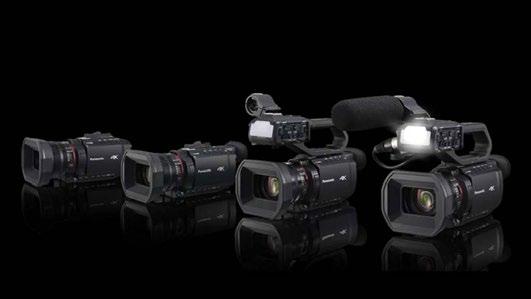
The integrated lens offers an optical zoom that ranges from 25-mm wide angle to 600-mm telephoto. The i.ZOOM achieves 32x at 4K and 48x at Full High Definition (FHD) mode. The 4-Drive Lens System drives the four lens groups independently, thus achieving the optical 24x zoom and compact body size. Two manual rings are provided, one for focusing and the other for zoom or iris operation. They also offer superior focusing speed, stability and tracking performance for both 4K and Full High Definition (FHD) and other features.
❚ https://connect.na.panasonic.com
FilmLight has officially launched FilmLight REMOTE, a remote color-grading solution that allows post houses and colorists to work remotely without sacrificing the high-quality and low-latency monitoring essential for fast and efficient workflows. The FilmLight REMOTE solution is available now to all users as part of Baselight 6.0.
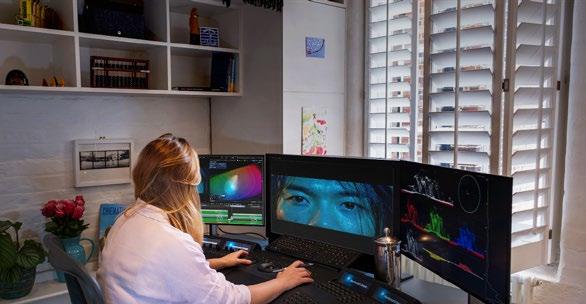
FilmLight REMOTE allows users to integrate a FilmLight control surface, user interface monitors, mouse and keyboard with professional monitoring over internet protocol. The Baselight or Daylight can run HP Anyware or Amazon DCV to provide the remote end with multiple UI monitors up to 4K. At the same time, an SRT video connection provides a high-quality video stream (supporting JPEG-XS and H265) to the remote system, where the FilmLight desk service can also provide support for the Slate, Blackboard Classic or Blackboard 2 control panels. REMOTE also supports the increasing interest from facilities to host equipment off premise, in a data center or in the cloud.
❚ www.filmlight.ltd.uk/index.php
Telycam’s new Explore broadcastclass PTZ camera features a 1-inch, 9-megapixel Sony sensor that enhances light sensitivity, resulting in superior lowlight performance with reduced noise levels. It captures 4K video at 60 frames per second with an expanded dynamic range that captures intricate details in both shadows and highlights, and with enhanced contrast and clarity. Bokeh effects with a shallow depth of field can be created to suit any artistic intention. Explore’s advanced Phase Detection Autofocus (PDAF) provides exceptionally fast and precise autofocus, making it ideal for dynamic broadcast and live production scenarios. Designed to integrate seamlessly into diverse workflows, Explore’s versatile IP and AV outputs include NDI High Bandwidth, NDI HX3, 12G-SDI with genlock, HDMI and SFP+ connectivity. AI-powered autotracking and 20x optical zoom are complemented by FreeD protocol support for integration with Augmented Reality (AR) and Virtual Reality (VR) production solutions.
❚ https://telycam.com

Riedel’s StageLink family of smart edge devices is designed for seamless network streaming in broadcast, live production and studio environments. The devices streamline decentralized signal distribution over generic IP networks, eliminating the complexities of traditional cabling and configuration. They enable the seamless capture and distribution of signals across networks, ensuring a smooth, reliable and cost-effective transition to IP-based workflows. StageLink devices leverage standard network cables instead of specialized infrastructure, creating a decentralized, scalable system that easily integrates microphones, intercom, GPIO devices and other audio-enabled equipment..

The new StageLink lineup includes six purpose-built devices tailored to specific workflow needs. The NSA-003A (Dual Partyline) enables seamless integration of third-party legacy two-wire intercom systems into Riedel’s Artist and Bolero ecosystems. The NSA-004A (Quad In) and NSA005A (Quad Out) offer four universal input and output ports, respectively,
❚ www.riedel.net/en
Brightcove’s new AI Content Suite features a range of AI-powered tools designed to make video content more impactful and improve business productivity. The suite includes three AI-powered capabilities—content creation, metadata optimization and translation—which simplify video content production by automating the creation and optimization processes.
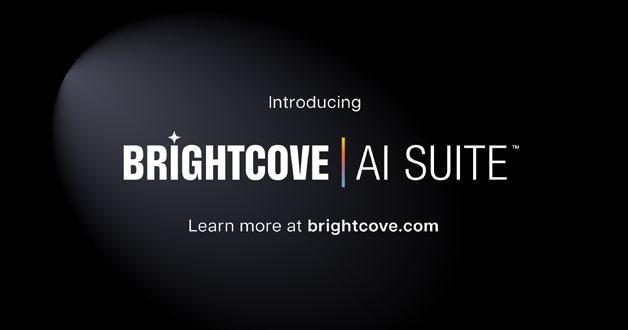
Key features include: rapid, automated conversion of long-form content into engaging short-form clips, highlight reels and themebased chapters to maximize reach across channels; conversion of horizontal video content into vertical formats to extend engagement with mobile viewers and across social platforms; enhanced discoverability through auto-generated metadata (including titles, tags and descriptions); and universal translation capabilities to dozens of languages to extend global reach and make content more accessible (coming soon).
❚ www.brightcove.com
ARRI has introduced a new entry model and flexible licenses for its Alexa 35 camera system with the company now calling its existing camera and all of its software-based features the “Alexa 35 Premium.” The Alexa 35 Base model includes a core feature set that can be upgraded with a temporary or permanent license. ARRI also said it is holding down system costs with its new Codex Compact Drive Express for ProRes recording.

The core features of the Alexa 35 Base model include: ProRes recording up to 60 frames per second in 4K 16:9 and other formats, ARRI Look File (CDL and 3D LUT) support; enhanced sensitivity modes up to EI 6400; and three independent 10-bit monitoring outputs in SDR and HDR color spaces. While the Alexa 35 Base model feature set meets the current shooting requirements of many users, ARRI’s new feature licensing concept allows users to unlock specialist and highend features whenever they are needed. ❚ www.arri.com/en

Riedel Communications has acquired MECSware, a leading specialist in private 5G technologies, and launched Easy5G, a private 5G network solution. Developed in collaboration with MECSware, Riedel said Easy5G will revolutionize 5G usage in dynamic environments like live events, remote productions and industrial facilities by offering unmatched flexibility, simplicity and rapid deployment.
Easy5G redefines private 5G deployment by combining the simplicity of Wi-Fi with the robustness of carrier-grade systems, the companies reported. With only a handful of setup parameters, the system can be operational in less than 60 minutes, cutting deployment time by weeks compared to traditional networks. In addition, no specialized 5G expertise or dark fiber is needed; Easy5G can be managed by general IT personnel using a standard switch infrastructure. Easy5G’s integration capabilities seamlessly link to Riedel’s MediorNet and Artist ecosystems, adding a reliable wireless IP layer for audio, video and data workflows.
❚ www.riedel.net/en
Deepdub
AI Audio API
Deepdub’s AI Audio API enterprisegrade platform is designed to deliver Hollywood-vetted audio experiences, leveraging the company’s emotive Text-to-Speech (eTTS) technology to enable real-time voice generation in dozens of languages and dialects with support for advanced customization parameters, including accent, speed, tempo and variance. It also enables users to fine-tune voice output.

Matthews’ new 5-inch Pocket C-Stand features a ¼-inch-20-inch adapter for tabletop work, photographic, stop motion and miniature applications, and offers all of the key features of its fullsized counterpart in a scaled-down, functional package. Its height range is adjustable from 6 to 18 inches. Designed with a rugged steel build, the stand includes a double riser and a folding leg for enhanced stability and flexibility. Available with a black powder coat (packaged separately for the first time) or as a chrome version, the stand is equipped with larger, easy-to-use knobs with the Matthews “M” logo. A detachable ¼-inch-20-inch screw designed for mounting small cameras, cellphone holders or other accessories makes the stand handy to use. For precise control, Pocket C-Stands feature two fully functional aluminum grip heads, equipped with 3/16-inch holes, well-suited to standard dot and finger flags or scrims.
❚ www.msegrip.com

AI Audio API can be used in a wide range of applications, including entertainment, news commentary, advertisements and commercial promotion, and even interactive voice response (IVR) and customer support. Deepdub’s technology ensures each voice carries the emotional depth and nuance necessary for powerful storytelling, educational content and effective customer interactions. The solution offers audio presets designed from years of industry experience with the most requested voiceover needs. These preconfigured settings enable users to rapidly adapt to different content types without requiring extensive manual configuration or exploration.
❚ https://deepdub.ai

Canon USA has announced key features and availability for its new Camera Color Matching Application, a powerful new Windows-compatible software application designed to streamline the color-matching process in video production with the CR-N700 PTZ camera. Designed for live broadcast, multicamera shoots and content creation, the Camera Color Matching Application simplifies achieving uniform color matching for Canon CR-N700 cameras to the main production camera, providing professional results with minimal effort and maximum precision.
Color consistency has always been a challenge for production teams, particularly when integrating different camera models and cameras from various manufacturers. Canon’s Camera Color Matching offers an innovative solution that automatically generates 3D Look Up Tables (LUTs) by detecting color charts, helping reduce time spent on manual adjustments and providing effortless color matching between Canon and non-Canon Cinema, Pro Video and PTZ camera models with the Canon CR-N700 PTZ camera.
❚ www.usa.canon.com/video

The latest version of Cinegy’s Cinecoder video codec software-development kit (SDK) addresses a problem that has faced the TV and broadcast industries since NVIDIA ended H.264 interlace support. Cinegy’s latest Cinecoder SDK version 4.22 addresses the situation by enabling interlace H.264 encoding using Turing, Ampere and Ada Lovelace (current) generation NVIDIA GPU cards. This development benefits the broadcast and Media & Entertainment industries, which still deliver most of their content in this format, Cinegy said.
Current generation NVIDIA cards now offer higher performance, increased encoding throughput and improved energy efficiency, while newer cloud instances provide better value for money with up-to-date NVIDIA drivers, Cinegy said. Benchmarks using standard test clips show the Cinecoder interlace H.264 encoder for NVIDIA GPUs creates output of the same or better quality than the original NVIDIA Pascal series hardware encoder, the company said.
❚ www.cinegy.com
Version 12.0.0 software for Lawo’s mc2 mixing console systems now offers native support for the HOME mc2 DSP App that runs on generic CPU platforms using cloud-native technologies and increases the mc236 MkII console’s processing channel count to 384. HOME mc² DSP, Lawo’s audio-processing HOME App for mc² mixing console systems, is an alternative offering to the A__UHD Core processor in a CPU-based package for production workflows based on Lawo’s unified, open HOME platform where operational agility is key. It runs on generic CPU processors and offers next-level granularity for Lawo’s mc²-grade DSP processing, the company said.


The HOME mc² DSP audio engine provides the familiar mc²-style signal processing architecture; support for mono, stereo, 5.1 and immersive formats; and the ability to handle up to 2,048 input processing channels. Other highlights include 256 aux busses, 96 groups, 96 sums, support for 32 automix groups, a downmixing function for stereo, 5.1 and immersive processing channels, as well as a co-mixer feature for monitoring and other collaborative purposes.
❚ https://lawo.com
Artificial intelligence ad-tech provider Waymark has unveiled Waymark 2 and said it has expanded its global client roster this year to include Sinclair and Cox Media Group. Waymark 2’s ad-creation technology allows media partners and digital clients to produce ready-to-air ads even more quickly and easily, producing higher-quality ads, greater control, and cut time by 50% relative to Waymark 1.
New features for Blackmagic Cloud include an icon view with thumbnails that can be scrubbed to preview footage and an inspector panel for easy viewing of clip metadata. Blackmagic Cloud customers can also now share a presentation with a client who is not a Blackmagic Cloud member via URL, making it possible to collaborate and conduct group chats. The cloud-storage app has a new icon view that customers can select at the top right of the window. Customers can scrub thumbnails by moving the mouse over the icons to scroll through a clip. If they switch back to list view, the icons reflect the media file’s contents.
Most media files have already been converted to image icons, though some are being processed and will be completed in the near future. Blackmagic Cloud supports generating thumbnail icons from a range of common media file formats; any format not yet supported will display generic icons. All customers currently using Blackmagic Cloud will see these new features immediately.
❚ www.blackmagicdesign.com

Among the technological advancements, Waymark 2 is the first AI
Atlanta DTH’s new NextGen TV receiver now features new Advanced HDR by Technicolor, which allows viewers with legacy digital TVs to access the latest live and streaming high dynamic range (HDR) content from NextGen TV broadcasters. Powered by Montage systemon-chip (SoC) and enabled with Advanced HDR by Technicolor technology, the new receiver allows HDR television owners to receive premium HDR telecasts from broadcasters including Sinclair, PBS, Gray Media and Capitol Broadcasting. Consumers with SDR televisions also benefit from enhanced picture quality when using the receiver to access NextGen TV services, the companies said.
The receiver will deliver live NextGen TV broadcasts, including HDR content, across more than 100 channels nationwide.
❚ https://adth.com
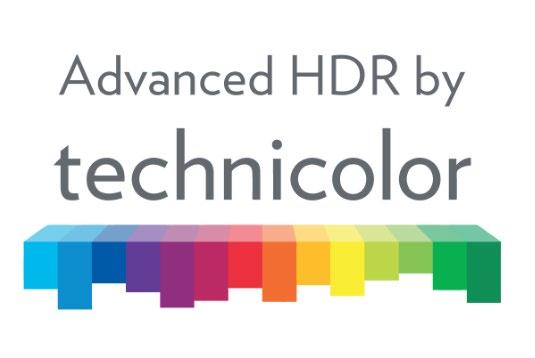
video platform that allows users to lock what they like and regenerate the rest. This allows users to quickly iterate with AI and get to the result they want without the frustration of taking one step forward and one step back, which has been the standard for AI creative tools to date. In addition, Waymark has upgraded the SOTA (state-of-the-art) models used for nearly all of the 13 distinct modules of video generation in the Waymark 2 technology stack. That includes more advanced and personalized scriptwriting, more context-aware computer vision, stronger audio-visual sync and more, the company said. ❚ https://waymark.com

For possible inclusion, send information to tvtechnology@futurenet.com with People News in the subject line.


Joe St. Jean has joined A3SA, the ATSC 3.0 Security Authority, as managing director, taking over for Ron Wheeler. He most recently was executive vice president, technology policy and standards at Paramount Global. In that role, he spearheaded ATSC 3.0 deployment initiatives for CBS, drove 4K HDR distribution for live sports led the adoption of automated speech recognition technologies for the live closed captioning of news telecasts and provided technical leadership in various regulatory proceedings.

ERIK HOLT DALET
Dalet has hired Erik Holt as senior vice president, global channels, responsible for the media technology and service provider’s global partner strategy. The former IBM and Optimove executive will play a pivotal role in strengthening Dalet’s global ecosystem by focusing on activating long-term, high-value collaborations with partners to scale the delivery of its solutions. Dalet supports a global ecosystem of more than 300 product integrations and hundreds of other businesspartner relationships.
Dynamic ad insertion provider Yospace has named Stuart Barnes as vice president of international business development. Working with Vice President of Commercial Ed New, Barnes is tasked with bolstering Yospace’s ability to accelerate adoption of digital ad insertion across North America, Europe and the APAC region. Barnes brings 20 years of digital video industry experience, most recently with Vimeo as vice president, Americas, where he helped evolve the video platform’s enterprise sales division.



The Society of Motion Picture and Television Engineers (SMPTE) has tapped Raymond Yeung as its standards vice president. Yeung is head of content standards at Amazon MGM Studios Technology, focusing on advancements in the media supply chain. He brings extensive experience in digital effects and film mastering and joined the HDR imaging development effort at Dolby Laboratories in 2021. Yeung is a SMPTE Life Fellow and an Academy of Motion Picture Arts and Sciences member.

IBC has named Stephen Nuttall, a 30-year senior executive and consultant in the sports, media and digital industries, as chair of its Partnership Board, IBC’s Partnership Board consists of representatives from the six organizations that own the major European industry trade show—IABM, IEEE, RTS, SCTE and SMPTE—and provides its governance and strategic oversight. From 2012 through 2017, Nuttall was YouTube’s senior director for Europe, the Middle East and Africa (EMEA).
Emergency communications solutions provider Digital Alert Systems has tapped Daniel Dillon as product and project manager. In this role, Dillon will manage Digital Alert Systems’ HALO product, a patented system for managing Emergency Alert System and Common Alerting Protocol devices, as well as related products and services. An 18-year industry veteran with substantial cableindustry knowledge, Dillon served in management roles with Trilithic and VIAVI Solutions.
The Advanced Television Systems Committee has named John I. Taylor, senior vice president of LG Electronics USA, as its board chairman. Taylor, LG’s most senior U.S. government affairs, corporate communications and industry relations executive, is an influential figure in U.S. digital television and a longtime ATSC board member and its communications chairman. He is chairman of the AWARN Alliance and co-founded the Digital TV Transition Coalition during the 2000s.

E.W. Scripps Co. has promoted Lyn Plantinga to senior vice president of local media, tasked with local media operations, overseeing Scripps’ team of regional vice presidents. Plantinga will also continue be general manager of Scrippsowned CBS affiliate WTVF Nashville, Tennessee. She has served as regional vice president and general manager for the last year, overseeing Scripps’ local television stations in Nashville; Lexington, Kentucky; Cleveland; Buffalo, New York; and Cincinnati.
